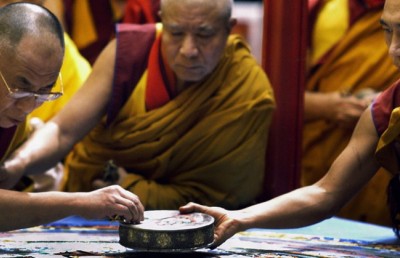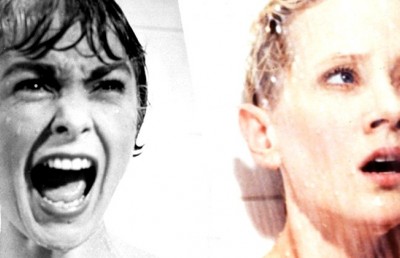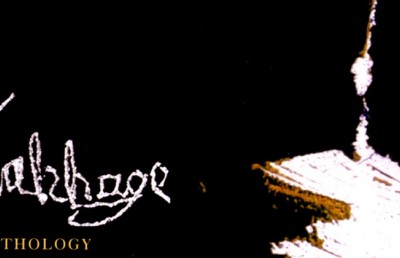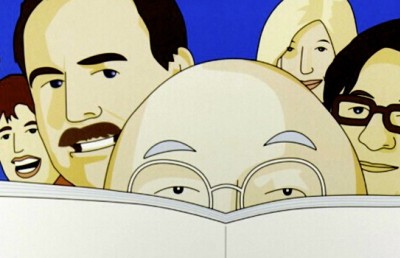Rip in the Curtain: Gus Van Sant’s Psycho
Gus' MacGuffin
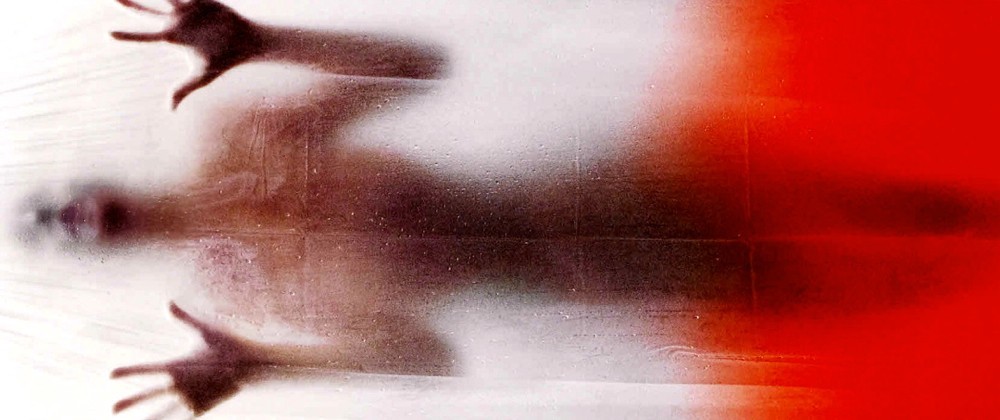
With Gus Van Sant currently on the hard road back to relevance – the gnomic, impressive achievement that was Gerry (2002) having been so closely followed by his Cannes triumph with Elephant (2003) – the time may be ripe to revisit one of his most eccentric and reviled (and very nearly forgotten) projects, his 1998 near-shot-for-shot remake of Alfred Hitchcock’s Psycho. As you may recall, the film achieved sheer ignominious failure after being extensively hyped and publicized. Not the least of the arrows it endured was the remarkable derision it received from the mainstream press, both before release, with many dismissing the idea of a remake outright, and after release, with reviewers attacking the casting of key roles (Vince Vaughan’s Norman Bates coming under special fire), and one in particular attacking, of all things, the costume design. Underlying much of the enmity the movie inspired was the feeling that Van Sant had with this unlikely effort actually "sold out" to Hollywood in the wake of his Oscar-baiting Good Will Hunting (1997). Exacerbating the case against him were the statements he made in interviews to the effect that the time was right for a new Psycho that would introduce the Bates motel and so on to a new audience.
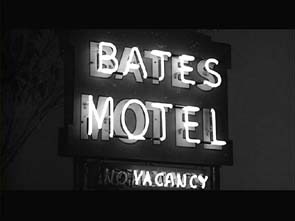
Bates Motel: The Old & the New
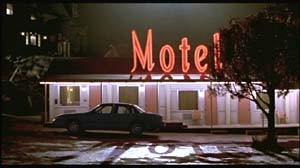
Of course, what Van Sant confronted head on with this multimillion-dollar exercise was the ontological problem presented by remakes of famous films – namely, how does one "recreate" a work that is, after all, an existing artifact of a different era entirely. This is obviously one of the elementary differences between film and theatre. Where one of the oft-stated "magical" aspects of the latter medium is its ephemerality, with not just individual performances but whole productions of plays disappearing into the ether, or (if they’re lucky) into memory, films remain a constant, troubling presence, spooky remnants of times dead and gone. Every remake of a film is dogged, at some level, by the original, particularly in the hyper self-consciousness of recent years. John Huston, the Warner Brothers, et al likely took little heed of the earlier adaptations of The Maltese Falcon when they made the definitive 1941 version. (If anything Dashiell Hammett would have been the main presence tapping on the filmmakers’ shoulders.) Yet, in today’s film world, every remake triggers a tiresome media think piece about how the surfeit of remakes surely signals the onset of moviemaking decline, even if the filmmakers do what some would consider the artistically responsible thing and revise the material; consistently, the most revered remakes are those which work to properly re-present their originals within a modern context (think De Palma’s Scarface or Scorsese’s Cape Fear). The outraged reception Psycho received seemed to place it in a different category, alongside the late 70’s remake of The Lady Vanishes and the 80’s Casablanca TV series with David Soul. Van Sant’s achievement (if only a negative one) was to invite criticism by, firstly, redoing a genuine Hitchcock masterpiece, and secondly, by attempting to recreate it to the degree that he did.
Yet, Van Sant himself offered a more interesting rationale for the remake than simply providing a new deluxe model Psycho for younger viewers put off by black-and-white. In one of his less perverse moments, he termed the enterprise an example of "appropriation art" akin to the work he did in art school. Considered in this light, Van Sant’s desire to "do" Psycho makes a kind of sense if you consider the nature of Hitchcock’s approach to filmmaking. It is worth quoting some words on the Master of Suspense by Jean-Luc Godard: "…something which is very astonishing with Hitchcock is that you don’t remember what the story of Notorious is, or why Janet Leigh is going to the Bates Motel. You remember one pair of spectacles or a windmill…" Or a showerhead, a rolled-up newspaper containing thousands of dollars – a knife. In his characteristically roundabout way, Godard pronounces Hitchcock a poet of "ordinary objects." In that regard, Hitchcock may be considered an appropriationist himself of materials from life. If his films are themselves examples of artistic assemblage, then you could argue that that makes them ripe for taking-apart and re-contextualizing, as the act of assemblage necessarily implies the separateness of the objects brought together.
A more conventional way of looking at Hitchcock is as a maker of shots which are than assembled into a larger whole, rather than a builder of scenes. While his frequent predilection for long takes make it difficult to slot him neatly into Bazin’s "montage" category of directors, one of the defining aspects of Hitchcock’s cinema is his a priori shot-by-shot breakdown of all prospective films in storyboard form. Put plainly, we think of Hitchcock’s films in terms of shots. Thus, a shot-by-shot remake of a film of his is more meaningful than would be true of a shot-by-shot remake of a film by, say, Cassavetes, never mind of a work by an avatar of la plan sequence like Miklos Jançso. Now the same would be true, of course, of Eisenstein – but try selling the Hollywood studios on a remake of The General Line. "Poet maudit" though he may have been, Hitchcock is ensconced in the pantheon as Hollywood storyteller par excellence; he is the brass ring that Movie Brats like Spielberg, Demme, and, naturally, De Palma (no mean Hitchcock appropriationist himself) have grasped toward. You could justify the Van Sant Psycho as an attempt to go De Palma one better while remaining within comfortable Hollywood boundaries.
But why this particular Hitchcock film? Van Sant has said that Psycho‘s bare-bones story made it more (re)doable than the far more logistically complex likes of North By Northwest or The Birds (which Van Sant cited as his favourite). Are there deeper reasons, though, for choosing Psycho? One of the givens of Hitchcock’ cinema is its voyeuristic nature and the consequent importance of spectatorship, of viewer positioning in his strategies. The way in which we are implicated in the onscreen events is crucial. Psycho is one of a number of Hitchcock films that begins with the camera (and thus, the viewers) placed in an intrusive position; in this case, in an aerial vantage point over Phoenix, from which godlike position we are moved through a skyscraper window into a hotel room , and then offered a chair before resting our eyes on a couple resting post-coitally on a bed. In such scenes, we are watching ourselves watch the characters. With its radical, violent shifts of point-of-view, and its emphasis on the unseen, that which remains teasingly outside the frame (Mrs Bates being the most pressing such example), Psycho is perhaps Hitchcock’s most (literally) piercing exploration of the theme. What Van Sant provides us is a near-mirror image which leaves us with the peculiar sensation of watching ourselves watching images retained from our viewing past, further reinforcing Psycho‘s additional, closely intertwined theme of doubling, with its surfeit of twinned characters (the Crane sisters, Norman and Sam, and the dead and "alive" Mrs Bates).
For all that, the inevitable side-effect of the film’s shot-by-shot fidelity is that the film is rendered meaningful only in relation to the original. The challenge Van Sant seems to have accepted with this project is that of making a commercial film which enlists involvement in the cinematic events as they unfold in the "here" and "now" while simultaneously creating an object (or a collage of objects) that mirrors a pre-existing object. As formalistic as Hitchcock was, as much as his camera called attention to itself, for him, as for the vast majority of commercial filmmakers, the "realness" of the world he put onscreen is not to be questioned. When his camera thrusts forward at the end of the shower scene, away from Marion’s blank staring eyes toward the rolled-up newspaper on the night table, we are thrust along with it. We, the privileged viewers, traverse the space in voyeuristic freedom. When we watch Van Sant’s mirror image of the same shot, we are watching a screen instead of Hitchcock’s window.
Now, one can see the possibilities inherent in this. Suppose you had a recreation of a film, with everything – clothes, sets, locations, camera angles, dialogue – identical to the original down to the smallest detail. Such a thing would be impossible, of course, but what if you had a remake eerily close to the original, enough to be a virtual carbon copy. What if the act of transformation deemed necessary for a "remake" actually still occurred, but at the minutest level with the changes to the original reduced to a pinpoint, being little more than an added prop here, an additional cutaway to a reaction shot there. No filmed remake could possibly reach the level of reproduction necessary to achieve this. Yet, speaking as someone who has seen the original Psycho almost more times than I can count, I can report how unsettling it is when the sequences and shot patterns so familiar from the original are suddenly ruptured by things unfamiliar. There is the very first scene of Marion Crane and her lover Sam Loomis in bed together. All is much as we remember, until Van Sant interpolates a close-up insert of a fly perched on a sandwich on the night table.
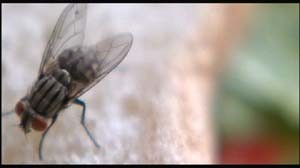
Another such example (and there are many) is the scene in the used-car lot; here, the tense exchange between Marion and the used-car dealer is seen in much the same way as in the earlier film, but for the addition of a parasol which Marion blithely carries under the hot sunshine. And a bright orange parasol at that, to match the orange underthings she sports earlier on.
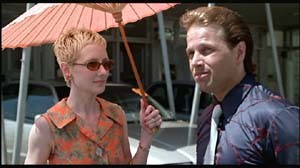
This leads us to the major visual change from the original, and that is the use of colour. The frequent garishness of the colour scheme is sometimes truly bizarre, notably in the scene in which Arbogast phones Lila, in which the phone booth is bathed in a pale green light reminiscent of DP Christopher Doyle’s previous work for Wong Kar-Wai. One is occasionally hit with the sensation that Van Sant is trying to evoke a colourized Psycho, as horrific a notion as that may be. In fact, the strangeness of the film’s colouring (as in the more notorious examples of film colourization) suggests the possibilities for film colour not as a guarantor of movie realism or as a beautifying agent, but as an alienation device. What it does (as if the presence of different actors wasn’t sufficient) is remind us of our distance from the original film, even as the detailed recreation contrives to bring Hitchcock eerily close.
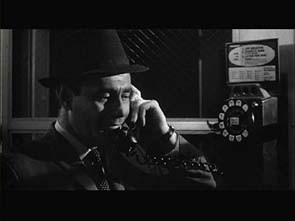
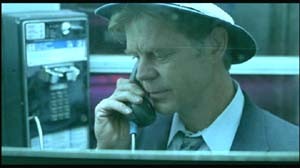
It is actually in Van Sant’s use of actors that the fundamental flaws in his conception become most apparent. Truly, short of creating android doubles of the original players, it’s difficult to see what could have been done to align the performances completely with the uber-remake strategy. A few of the smaller roles (like Chad Everett’s cowboy millionaire) are close enough recreations of the originals to pass muster, but only one of the leading players actually attempts to re-enact the original performance. Anne Heche’s Marion is a walking shadow reminder of Janet Leigh’s rendition. In her line readings, the rapt attention she pays to Bates in their scenes together, and the ambiguous range of expressions across her face as she drives in the rain, Heche very nearly achieves the effects Leigh does while still bringing her particular pixie flightiness to the character. Heche comes the closest to striking the balance Van Sant must have been looking for, though, in truth, it’s difficult to know what that balance might be given the peculiar nature of the project.
Julianne Moore’s Lila and Viggo Mortenson’s Sam are the most thoroughly rethought of the five leads, while William Macy’s Arbogast and Vince Vaughan’s Norman Bates fall somewhere in between. Moore and Mortenson have the easier task as their opposite numbers in the original film have less iconographic weight attached; thus, John Gavin’s straight-arrow becomes Mortenson’s vaguely malevolent good ol’boy, and Vera Miles’ tense, weepy Lila becomes Moore’s hard, brittle bohemian. Both actors are fine; one could imagine the compliment being paid to them that their acting makes you forget that this is a remake, that they reanimate the roles, make them new and nineties. Yet doesn’t that violate the conceptual framework Van Sant has so painstakingly erected?
As far as the other two leads are concerned, Macy fares better; as physically different as he is from Martin Balsam – a wiry bantam versus Balsam’s bullnecked heavy – the wiseguy cockiness of the original performance proves to be more than within his reach. Macy probably comes closest to a conventional kind of equipoise in his take on the role: a reinterpretation of the character while retaining the original’s essence. This is more than can be said, though, for Vince Vaughan’s Norman. A bulky presence in the role, Vaughan is miles away from Tony Perkins’ aching vulnerability, and, while not without a certain wit (a choice moment is Vaughan’s mad, bashful smile at a passing car that surprises him in the process of cleaning up Marion’s corpse) his Bates inevitably seems heavy-handed. Vaughan’s imposing demeanour is effective in the scene in which he is cross-examined by Arbogast; in a cunning reversal of the original, Perkins’ palpable anxiety in the face of Balsam’s questioning becomes an intense slow burn, leaving us fearing for Macy’s life. Yet his aura of menace plays havoc with the parlour scene with Marion. Van Sant obviously took into account the reinterpretation; thus, Marion is noticeably unnerved, and anxious to get away at the end of Norman’s spiel. Yet, we are left with the uncomfortable question of why Marion agreed to go in the back room with this hulking, glowering man-child. It is to Van Sant’s credit that he recognized the coarsening effect of the off-casting; he appears to take impudent advantage of it in his rendition of the famous peephole scene, with Bates’ viewing of Marion undressing now accompanied by squishy masturbation noises – a genuinely startling (though somewhat cheapening) moment.
For all the interest the 1998 Psycho generates as a conceptual work, the fact remains that, in a film with a classical narrative, with characters, a dramatic arc, etc., there are certain expectations of verisimilitude that must be satisfied (or left unsatisfied, if there is a clear reason for not doing so). Van Sant’s film is a curiously dated artifact, with a narrative psychology rooted four decades earlier (where the original, while clearly a product of 1960, still seems strikingly modern). Marion using the euphemism "some place" to tactfully mention the possibility of incarcerating Norman’s mother, the total misreading by Sam and Lila of Norman’s possible motive for killing Marion, and the psychiatrist’s explanation of Norman’s malady – all spring all-too clearly from an earlier era, before motiveless, pathologically-driven killing became an American commonplace. There are other bewildering elements: the Crane sisters are products of totally different periods, while the substitution of the kind, eminently reasonable Robert Forster for the blunt, surly Simon Oakland as the psychiatrist has odd implications; where it could be argued that the casting in the original served to subvert the character’s authority, here it appears that we are meant to accept his diagnosis at face value. Actually it’s difficult to tell how we are meant to react to this and in fact to much of the film. The complexity of the original movie, created largely by the shifting points-of-view, becomes the opacity of the remake, created by the discrepancies of period and psychology. The answers to the central questions of Hitchcock’s film as it resolves itself – namely, who is Norman Bates, what caused him, and how are we supposed to feel about him – are in Psycho Mark II not only difficult to get at but impossible to care about. (How viewers unfamiliar with the original will read what’s going on is difficult to determine; they’d probably just be bored.) These surface tensions, along with the wild variance of the performances in relation to the original, suggest that Van Sant hadn’t quite thought his conceptual framework through.
Perhaps paradoxically, the scenes that work the best are the original’s most famous sequences – Norman’s three violent attacks in the guise of Mrs Bates. The two murder scenes have a particular impact. The reasons for their effectiveness are twofold. One is that their very familiarity dovetails nicely with Van Sant’s approach, with every minute variation of the original an additional shock. The second reason is the lack of equivocation in these scenes. There can be no ambiguity as to what these scenes are about; they are on the one hand abstract set pieces, exercises in brutal form, and on the other, dramatic scenes meant to generate primal, basic emotions – terror, sorrow, revulsion. Van Sant’s rereading of these scenes also incorporates some of his freest imagery, with insert shots of a naked woman and a cow (or a sheep?) on the road in the Arbogast murder sequence, and of clouds -something of a Van Sant signature – in the shower scene. These stray, found images are not just shards of the characters’ dying memories but also rips in the fabric of the original film, and as such they have real power. They also register as assertions of authorship, signs of the collage artist behind the Master.
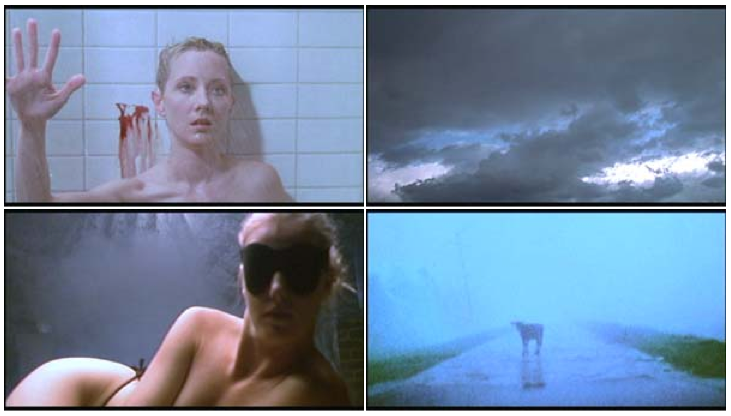
The original shower scene is of course one of the two or three most famous in movie history, and therefore one of the most closely-studied. To see it played out in colour, with the blood red, and the stabbing and the nudity more graphic is to see it with fresh eyes, to make us hyperconscious of how abstract the original is. Where Hitchcock witholds, Van Sant shows, doing a violence to the original that momentarily mirrors the violence done by Norman to Marion, as if his ferocious attack is rupturing Hitchcock’s frame itself. In this scene, Van Sant’s film becomes a genuinely discomfiting experience, and underlines how bold Van Sant’s notion of a shot-by-shot remake of Psycho really was, doomed to failure though it may have been. The film world since has seen several impassioned works of pastiche art. Not only has Van Sant appeared resurgent with the Bela Tarr-influenced Gerry and the Columbine transposition of Alan Clarke’s Elephant, we’ve also had two different revisitings of that other fifties master Douglas Sirk: Francois Ozon’s exercise in campy style 8 Women, and Todd Haynes’ emotionally overwhelming (unofficial) remake of All That Heaven Allows, the great Far From Heaven, which critic John Harkness likened to the Van Sant Psycho as an eerie duplication of its original. Van Sant’s failure now looks more prescient than disastrous, an example, however flawed, of how culturally potent found art can be in an era looking desperately to the past for clues to a fearful present.


